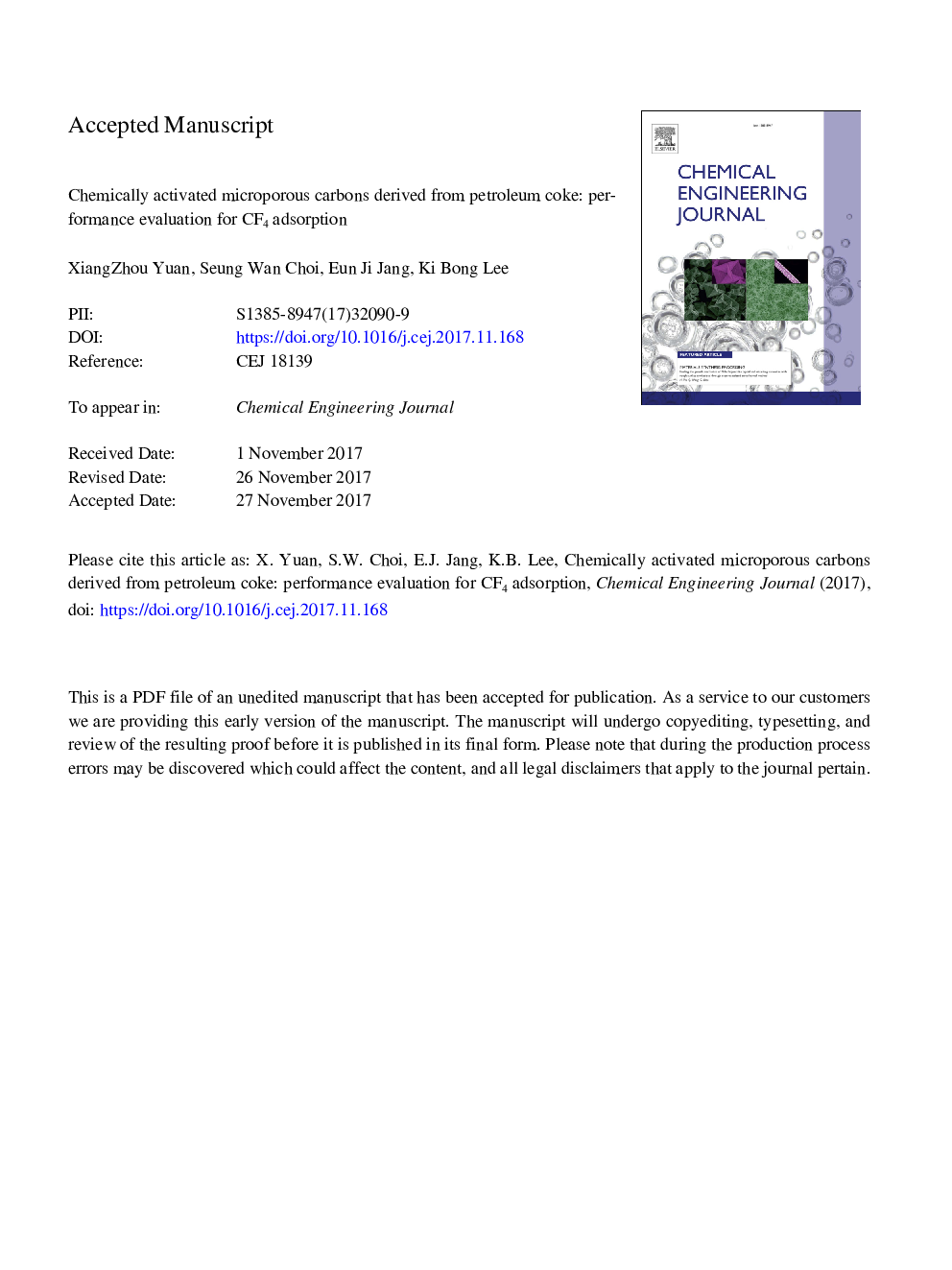| Article ID | Journal | Published Year | Pages | File Type |
|---|---|---|---|---|
| 6580606 | Chemical Engineering Journal | 2018 | 37 Pages |
Abstract
CF4 is considered to be a significant global-warming compound and has a fairly long atmospheric lifetime, which exacerbates climate change. Adsorption is considered a promising technology for capturing CF4 and appropriate adsorbent is one of key factors for successful development of adsorption method. In this study, CF4 adsorption using microporous carbon materials was investigated from both equilibrium and kinetic perspectives. Petroleum coke (PC) was utilized for developing CF4 adsorbents by carbonization and KOH-activation processes. The carbonization temperature and KOH/PC mass ratio were varied from 300 to 600â¯Â°C and from 1 to 3, respectively. Varying the carbonization temperature and KOH/PC mass ratio had a dramatic effect on the textual properties of the prepared samples. CF4 adsorption was well fitted by the Langmuir isotherm model, and the CF4 uptake was remarkably dominated by the surface area and pore volume of narrow micropores below 0.8â¯nm in diameter. The experimental CF4 adsorption data were well described by the pseudo-second-order kinetic model, compared with the Elovich and intra-particle-diffusion models, and CF4 adsorption appeared to be mainly controlled by physisorption. The PC450-K2 adsorbent, prepared using a carbonization temperature of 450â¯Â°C and a KOH/PC mass ratio of 2, exhibited the highest CF4 adsorption uptake of 2.79â¯molâ¯kgâ1 at 25â¯Â°C and 1â¯atm, in addition to good CF4/N2 selectivity at relatively low CF4 pressures, excellent recyclability, easy regeneration, and rapid adsorption-desorption kinetics.
Related Topics
Physical Sciences and Engineering
Chemical Engineering
Chemical Engineering (General)
Authors
XiangZhou Yuan, Seung Wan Choi, Eunji Jang, Ki Bong Lee,
